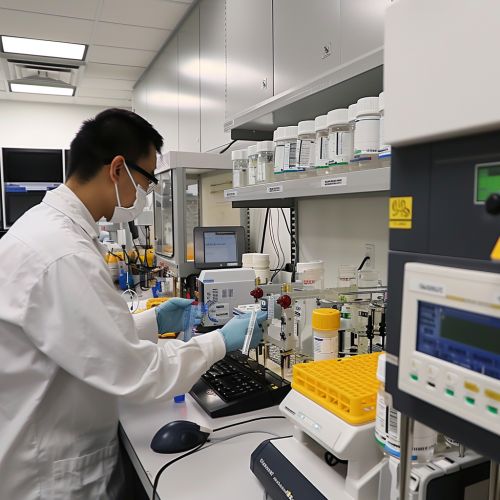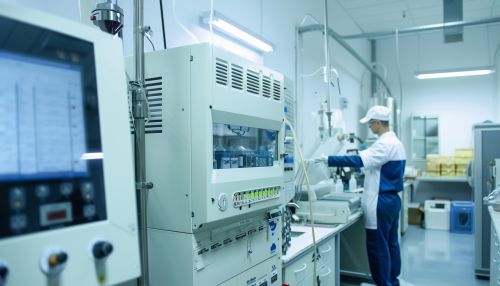Product Testing
Introduction
Product testing is a critical process in the development and marketing of new products. It involves a series of evaluations designed to ensure that a product meets specified requirements and performs as expected under various conditions. This process is essential for identifying potential issues before a product reaches the consumer market, thereby safeguarding both the manufacturer and the end-user.
Types of Product Testing
Product testing can be categorized into several types, each serving a specific purpose:
Functional Testing
Functional testing assesses whether a product performs its intended functions correctly. This type of testing is crucial for identifying defects that could impact the product's usability. For example, in software development, functional testing ensures that all features work as specified in the requirements document.
Performance Testing
Performance testing evaluates how a product performs under specific conditions, such as high load or stress. This type of testing is essential for products expected to operate in demanding environments. For instance, performance testing of a web server might involve simulating thousands of concurrent users to ensure it can handle peak traffic without crashing.
Usability Testing
Usability testing focuses on the user experience, assessing how easy and intuitive a product is to use. This type of testing often involves real users interacting with the product and providing feedback. Usability testing is particularly important for consumer electronics and software applications, where user satisfaction is a key success factor.
Safety Testing
Safety testing ensures that a product does not pose any hazards to users. This type of testing is mandatory for many products, especially those in the medical, automotive, and consumer electronics industries. Safety testing might involve checking for electrical hazards, chemical toxicity, or mechanical failures.
Compliance Testing
Compliance testing verifies that a product meets regulatory requirements and industry standards. This type of testing is essential for products that must adhere to specific guidelines, such as medical devices, which must comply with regulations set by bodies like the FDA or CE.
Environmental Testing
Environmental testing evaluates how a product performs under various environmental conditions, such as extreme temperatures, humidity, or vibration. This type of testing is crucial for products that will be used in harsh environments, such as aerospace components or outdoor equipment.


Methodologies in Product Testing
Product testing methodologies can vary widely depending on the type of product and the specific requirements. Some common methodologies include:
Black-Box Testing
Black-box testing involves evaluating a product's functionality without knowing its internal workings. Testers focus on input and output, ensuring that the product behaves as expected. This method is commonly used in software testing.
White-Box Testing
White-box testing, also known as clear-box testing, involves examining the internal structure and workings of a product. This method is used to identify hidden defects and ensure that all internal components function correctly. White-box testing is often employed in software development to test code logic and structure.
Automated Testing
Automated testing uses specialized software tools to execute tests automatically. This method is highly efficient for repetitive tasks and large-scale testing scenarios. Automated testing is widely used in software development for regression testing and performance testing.
Manual Testing
Manual testing involves human testers executing test cases without the aid of automated tools. This method is essential for exploratory testing, usability testing, and scenarios where human judgment is crucial. Manual testing is often used in conjunction with automated testing to provide comprehensive coverage.
Stages of Product Testing
The product testing process typically involves several stages:
Planning
The planning stage involves defining the objectives, scope, and criteria for testing. This stage includes creating a detailed test plan, identifying resources, and establishing a timeline.
Design
In the design stage, specific test cases and procedures are developed based on the requirements and specifications. This stage involves creating detailed test scripts, selecting testing tools, and setting up the testing environment.
Execution
The execution stage involves running the tests according to the test plan and documenting the results. This stage includes both automated and manual testing, depending on the methodology chosen.
Analysis
In the analysis stage, the test results are reviewed and analyzed to identify defects and areas for improvement. This stage involves comparing the actual results with the expected outcomes and determining the root cause of any issues.
Reporting
The reporting stage involves documenting the findings and providing recommendations for corrective actions. This stage includes creating detailed test reports, summarizing the results, and communicating the findings to stakeholders.
Retesting
Retesting involves re-evaluating the product after defects have been addressed. This stage ensures that the corrective actions have resolved the issues and that the product meets the specified requirements.
Importance of Product Testing
Product testing is essential for several reasons:
Quality Assurance
Product testing ensures that a product meets the specified quality standards and performs as expected. This process helps identify defects and areas for improvement, leading to higher-quality products.
Risk Mitigation
By identifying potential issues before a product reaches the market, product testing helps mitigate risks associated with product failures. This process reduces the likelihood of recalls, legal liabilities, and damage to the brand's reputation.
Regulatory Compliance
Many industries have strict regulatory requirements that products must meet before they can be sold. Product testing ensures that a product complies with these regulations, avoiding potential legal issues and fines.
Customer Satisfaction
High-quality products that perform as expected lead to higher customer satisfaction. Product testing helps ensure that a product meets customer expectations, leading to positive reviews, repeat business, and brand loyalty.
Challenges in Product Testing
Product testing can be challenging due to several factors:
Complexity
Modern products, especially in the technology sector, are becoming increasingly complex. This complexity makes it challenging to design comprehensive test cases and identify all potential issues.
Time Constraints
Product development timelines are often tight, leaving limited time for thorough testing. This constraint can lead to incomplete testing and the risk of undetected defects.
Resource Limitations
Testing requires specialized tools, equipment, and skilled personnel. Limited resources can impact the scope and depth of testing, potentially compromising the quality of the results.
Rapid Technological Advancements
The rapid pace of technological advancements means that testing methodologies and tools must continually evolve. Keeping up with these changes can be challenging for testing teams.
Future Trends in Product Testing
The field of product testing is continually evolving, with several emerging trends:
Artificial Intelligence and Machine Learning
Artificial intelligence (AI) and machine learning (ML) are increasingly being used to enhance product testing. These technologies can automate complex testing scenarios, identify patterns in test data, and predict potential issues.
Internet of Things (IoT)
The proliferation of IoT devices presents new challenges and opportunities for product testing. Testing IoT devices requires evaluating their performance in interconnected environments and ensuring their security and reliability.
Agile and DevOps
Agile and DevOps methodologies emphasize continuous testing and integration throughout the development lifecycle. These approaches require testing teams to adopt new tools and practices to support rapid development cycles.
Virtual and Augmented Reality
Virtual and augmented reality technologies are being used to create immersive testing environments. These technologies enable testers to simulate real-world conditions and evaluate product performance in a controlled setting.
Conclusion
Product testing is a vital component of the product development process, ensuring that products meet specified requirements and perform as expected. By employing various testing methodologies and stages, companies can identify potential issues, mitigate risks, and deliver high-quality products to the market. As technology continues to evolve, the field of product testing will also advance, incorporating new tools and techniques to meet the challenges of modern product development.
